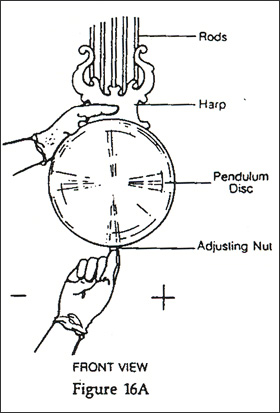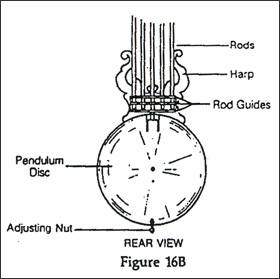
How to Regulate a Clock
Select a safe place to store the winding crank.Periodically, (once a year is often enough) you should check the weights on your clock to make sure the hook on the top and the nut on the bottom are tight and secure. After the clock has been in operation for a while the screws holding the weights together have a tendency to loosen.
-
To check tightness on Chain Movements: Remove one weight at a time and lay it on a flat surface. Hold the nut on the bottom of the weight stationary with one hand and turn the hook on the top clockwise to tighten. Be careful when handling the weights since they are extremely heavy.Remember! Wear your gloves or use a cloth since the weight casings are brass.
To check tightness on Cable Movements: DO NOT remove the weight from the clock, releasing the tension on the cable, as this will cause the cable to overlap on the cable drum. Simply hold the hook on the TOP of the weight stationary (Be careful not to raise the weight when doing this) with one hand and with the other grasp the weight and turn clockwise (to right).
Regulation for Making Your Clock Run Faster or Slower.
The distance the pendulum disc hangs from the clock movement determines how fast or how slow your clock will run. This distance can be shortened or lengthened by turning the nut, which is located below the pendulum disc. To make your clock run faster, turn the nut to the right. To make your clock run slower, turn the nut to the left. When making this adjustment to your clock, hold the pendulum steady with one hand while turning the adjusting nut with the other – making the adjustment in this way, will prevent the pendulum from twisting and possibly damaging the suspension spring which is located at the top of the pendulum. (See Figure 16A)

On Lyre Pendulums Only:
When making the adjustment for speed if the pendulum disc does not move freely: Remove the pendulum from the clock and check to make sure the rods are inserted through the rod guides properly. (See Figure 16B)

3 Important Points:
- Be sure to always use the same source of time to set the clock and check the accuracy of the time keeping.
- To accurately regulate the clock for loss or gain of time, it must be calculated over a 24-hour interval.
- After regulating your clock, be sure to set the correct time.
 Grandfather Clock Specialist
Grandfather Clock Specialist
Official Service Center
Sligh • Trend • Ridgeway • Howard Miller • Herschede • Hentchel and others
Phone: (310) 897-4444
Toll Free : 1-888-888-0827 California only
Exclusively House Call Services
